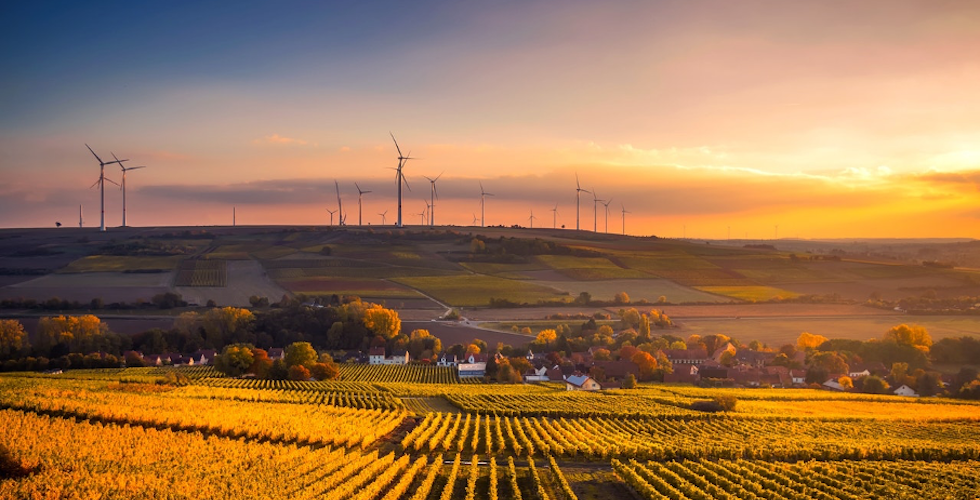While e-commerce continues to grow - consumer awareness of the ecological footprint of e-commerce is also growing.
Consumers have an increasing need for sustainable webshops and are increasingly opting for more sustainable delivery options. That is why it is wise to take this into account when designing your webshop. In addition, as a webshop owner you may notice that a more sustainable method is also more efficient and saves you money - all the more reason to work on a (further) sustainability of your webshop. Not sure where to start? In this blog we discuss five manageable steps to design your webshop more sustainably.
Step 1: Sustainable (er) products in your range
- The most logical step to start with is to take a critical look at the range of your webshop. Do you buy your products? Pay attention to how and where they are produced and whether the raw materials can be recycled. For example, is a lot of PVC used in the production of your offering? Then consider the possibility of a PVC-free line in order to offer more environmentally friendly products. You can therefore do well to expand your offer with a sustainable line or option but carry out thorough market research beforehand so that you know where the opportunities lie. It would be a shame if you came up with yet another sustainable cotton bag that already has enough suppliers. The upcycling turning old materials into new products is the latest trend. The material is therefore not broken down, but refashioned. If you are a creative talent or have a webshop, there are plenty of opportunities to sell unique pieces.
TIP: Fortunately, fair trade, sustainable and eco goodies are hip, and certainly within the fashion and beauty sectors. To get inspired, take a look at what's already on the market.
Step 2: Making your packages more sustainable
- Are you shipping packages full of plastic stuffing material or huge boxes for a small item? Many consumers no longer want this now that there is an increasing awareness of the impact of all this packaging material on the environment. It is therefore wise to have different sizes of packaging in your range and to choose cardboard instead of plastic as much as possible. With more suitable packaging, there is also less air in the packaging itself; this equates to less loading space and therefore less space taken up in the logistics chain. This makes it reasonably easy to make your webshop more sustainable.
TIP: There are now plenty of beautiful sustainable packaging options on the market that are worth investigating - you really don't have to reinvent the wheel yourself. For example, there are already a lot of initiatives for reusable packaging.
Step 3: Offer more sustainable delivery options
- There is a new phenomenon of “delivery shame” among consumers: finding it embarrassing when the delivery person is at the door again or having to visit the neighbours for a delivered package. Phenomena like these are something to consider when offering your delivery options. More sustainable delivery options are thus becoming more important for consumers. In large cities you already see more bicycle couriers or electric vehicles instead of the standard delivery vans. Many carriers have already stopped a second delivery attempt and more (local) collection points are being created. And the fact that the consumer does not want to pay for this is no longer an argument; in fact, many are willing to pay extra for sustainable shipping options, even being prepared to wait longer for deliveries with a lower carbon footprint.
It is a smart step to talk to your current or new sustainable distributor of your packages. In such a conversation, be sure to ask your partner critical questions regarding what they are doing to reduce their ecological footprint. For example, delivery partner Asendia gives the following response to the role of e-commerce in climate change:
“In international distribution and transport it is crucial that you act responsibly and do everything possible to minimize the ecological footprint. Not only is it sufficient to compensate, but it is also about the choice of, for example, your business partners and modes of transport. And not only distributors can and must contribute to minimizing the ecological footprint, sustainable distribution is also about the choice of packaging, returns and web shops that offer sustainable solutions”.
Pia Elster, Marketing Communications Manager Asendia Nordic and Benelux
TIP: It has been proven that offering multiple delivery options increases the conversion of an online store. As a webshop it is therefore wise to offer multiple (also sustainable) shipping options.
Step 4: Tackle your return policy firmly
- Customers are coming to expect increasingly comprehensive shipping options, and an easy returns policy is high on the list of demands. In some countries, the possibility of free returns is even the most important consideration when making an online purchase.
But not every webshop can or wants to meet the wish of free returns, because many returns also cost a lot of money and are certainly not sustainable. And we are not even talking about the waste of unsaleable products from returns - the cost of returns to a webshop can be significant. For that reason, your focus should be on taking the pain out of returning as much as possible. This way you ensure that the return process runs smoothly, but you do not necessarily offer that the consumer can return his package for free. This prevents unnecessary return costs and offers excellent customer service.
TIP: When you get started with your return policy it is wise to analyse the reasons for return shipments, among other things. Because, if you know why people are returning products, you can address these reasons at the root cause in order to minimize the number of returns.
Step 5: Support sustainable initiatives
- More and more companies are opting for CO2 compensation to make a sustainable contribution or giving this option to the customer himself - for example, when purchasing a plane ticket or refuelling. In addition to CO2 reduction, climate compensation is the way to go towards climate neutrality. Moreover, climate compensation can make a difference elsewhere in the world with imaginative climate projects. And this is how we contribute to CO2 reduction in developing countries. For example, you can think of compensating CO2 emissions by contributing to a tree planting project in the Amazon, or you can make a contribution to a renewable energy wind farm project in India. It's great when you work with partners who make the same choices, such as a distributor that supports climate protection projects by means of CO2 compensation.
TIP: Inform your customers about the sustainable initiatives that you support (through their contribution), so that you propagate what you stand for. For example, you can send customers a thank you when 1 million new trees have been planted; they will enjoy reading it and seeing the impact they have had.
Already working very sustainably?
You may have already completed these five steps. Beautiful! Ready to take that international step with your webshop now? Then it is wise to also set up your international return policy properly. Download the e-book below and set up an optimal policy for international return logistics.







